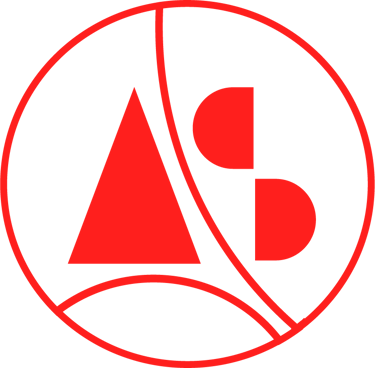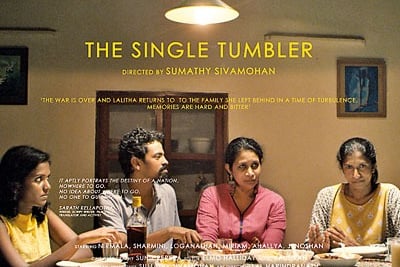

As I spent this past week filling old nutella glasses with the remnants of acrylic paints from paint brushes I must have used at school - blurry greens and mucky beige - and attempting and failing - and finally sinking into a visual art practice again - I was lucky to have the reassurance of London’s arts programming to keep me going.
This past week I have seen a few things that need (and deserve) to be noted. Shout out to the family and friends that share these treats and to my own procrastination for taking me there.
In summary: If you’re bored of scrolling and want some subpar content about someone else's realising of the world around them- you're so welcome. Here’s a mini photo essay on Anusha’s arts and culture experiences this past week. Bare with her while she exposes her paranoia of never knowing enough.
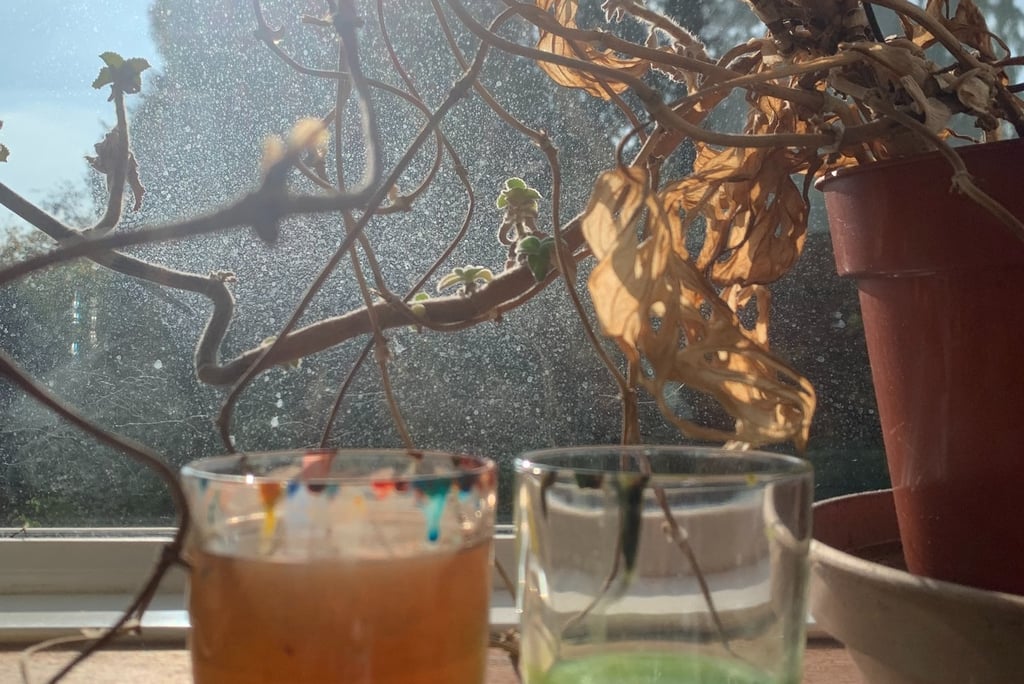

I watched a film - ‘The Single Tumbler’ at Richmix, Shoreditch
Shown as part of ‘Unspoken’ A Mental Health Film Festival. This independent film is about a family grappling with the after effects of the war in Sri Lanka. A lost thambi (younger brother), a grieving ammama (grandma), siblings that had to adapt, a sister living abroad and a bored teenager.
We see the ways trauma plays out for this family; the ignorance and privilege of those that were not there, resentment and endurance from those that were, numbness, madness, confusion, pain. Films like these bring us closer to the lived experiences of those we see on TV; discuss at the dinner table; read about in books and are sometimes related to. Something that comes up again again for me is how effective film as a medium is. Increased sensitivity, awareness and a reminder.
Then I saw ‘Jumping Figure’ painting at Royal Academy.
Failed to get into the exhibition I was meant to visit, but instead came across this painting by Leonard Rodoman that captures a girl jumping a fence in the Mojave desert. He saw her from the seat of a train and depicted the girl's figure fused with the landscape she was in. Interesting for me as I chase a line of inquiry about our connection to land - the idea that we are the earth, the surroundings are our bodies and vice versa. Extraction, consumption and its effects. It was interesting to see how this played out visually which links directly to…
Emily Kam Kngwarray at Tate Modern
This Aboriginal Australian artist, for 8 years from the ages of 78 to 86, created 3000 artworks. They were not small - I calculated that to be almost 1 painting a day for 8 years- who knows how many dots a day. Obsession? Prolificness. Production. In the past, aboriginal art was made with markings in the ground or painting on surfaces using natural pigments. As I stared at the 80 paintings I wondered - why acrylic? Plastic, preservable, permanent. The message won’t fade. ‘We were here, we are here’ she says.
In her teens and twenties she, like many other Aboriginal Australians, worked for little or no wage on the pastoral land that was forcibly taken from her people by European settlers.
So whilst staring into the abyss of her dot-covered canvases it felt like Kngwarray had a special understanding of this dispossessed land. She knows it so deeply- recording its textures, its vastness. She makes her point - she does it over and over again. There is no unseeing it. With these iterations her style and storytelling would not have evolved the way it did. (Iterations, Anusha - let us not be scared). And those colour combos- she really knew her pairings.
On a walk the next day, outside, the slightly damp floor stippled in autumnal leaves - looked very much like her work. From the pavements of Watford, England to the land of Alhalker, Australia. I tried to look, as Kngwarray did.
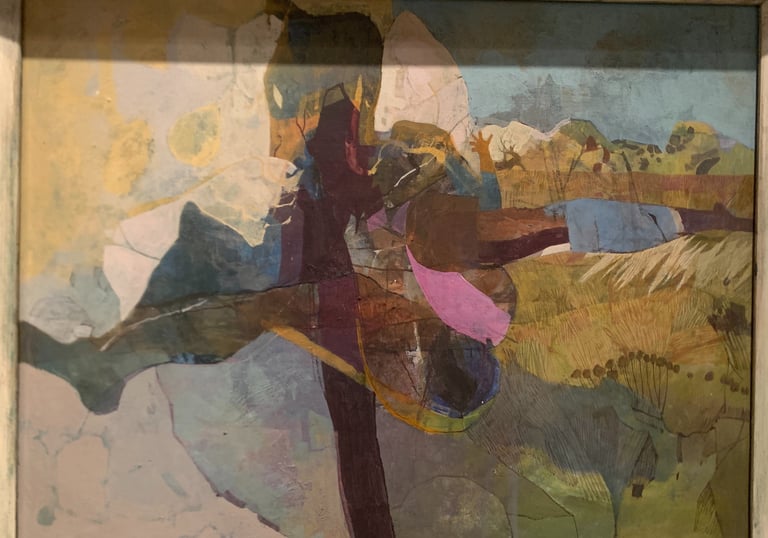

Pieces that had me lingering:
‘Black Orpheus’, is a publication by the writer Ulli Beier (a German scholar that promoted Nigerian arts to the west). I really enjoyed reading the excerpts in the open pages on display where he reflects on the west’s obsession with itself and blindness to the ‘delicacy and sensitiveness’ that African art has. He quotes the English sculptor Jacob Epstein who says African sculpture has ‘a regard for the material, and none of the stupid vulgarity, pomposity and crudeness, so evident in (European) sculpture today’. I found myself nodding and smiling as I read through these.
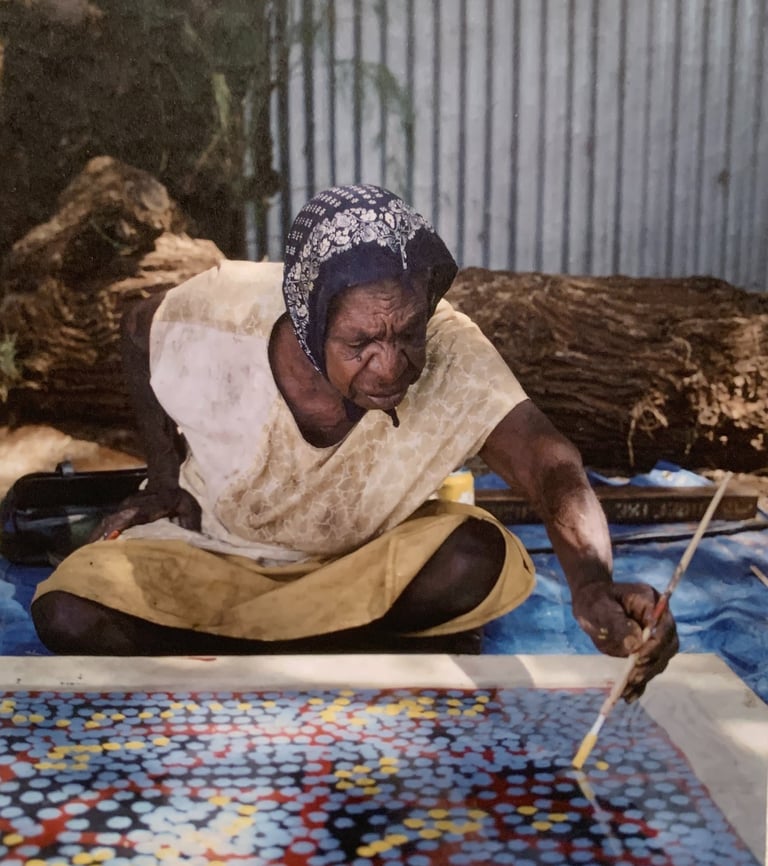

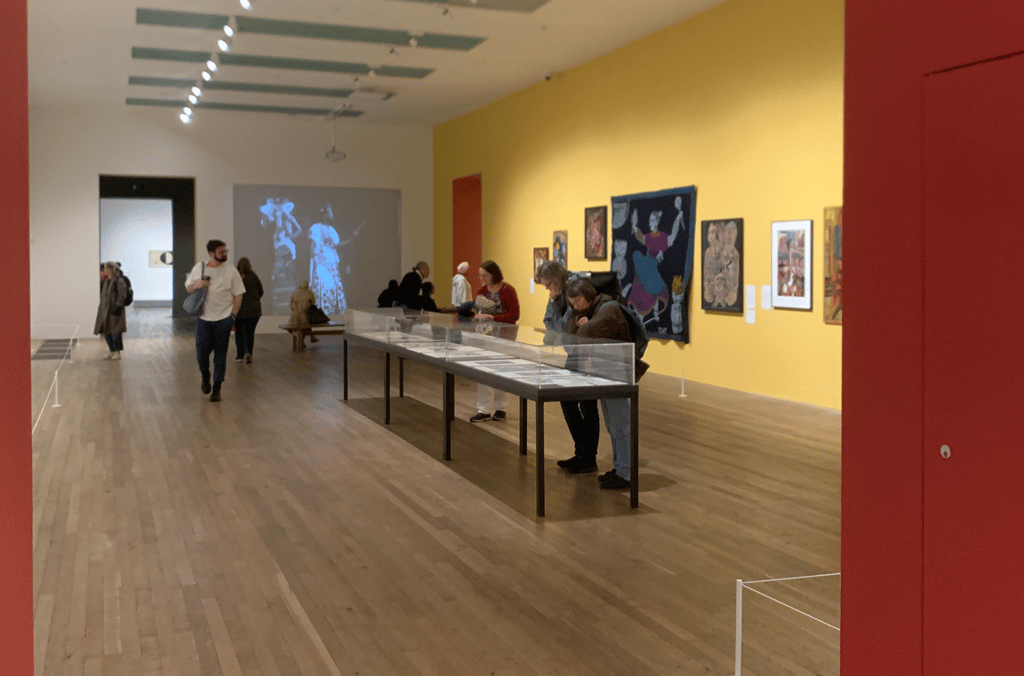

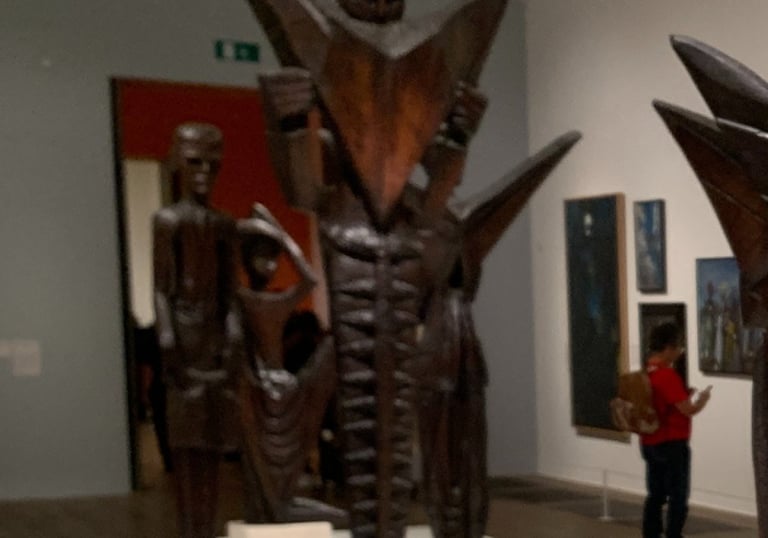

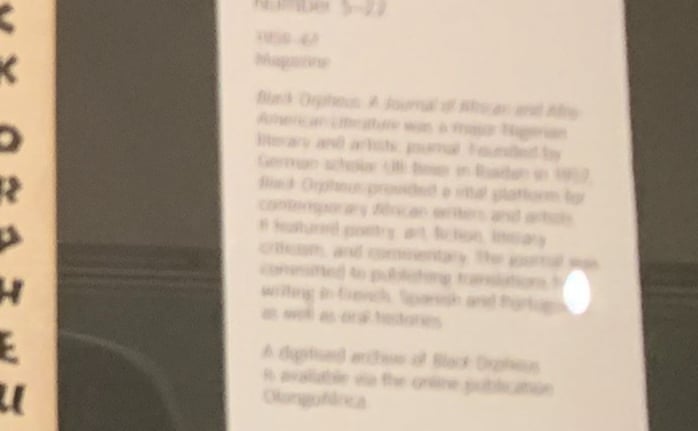

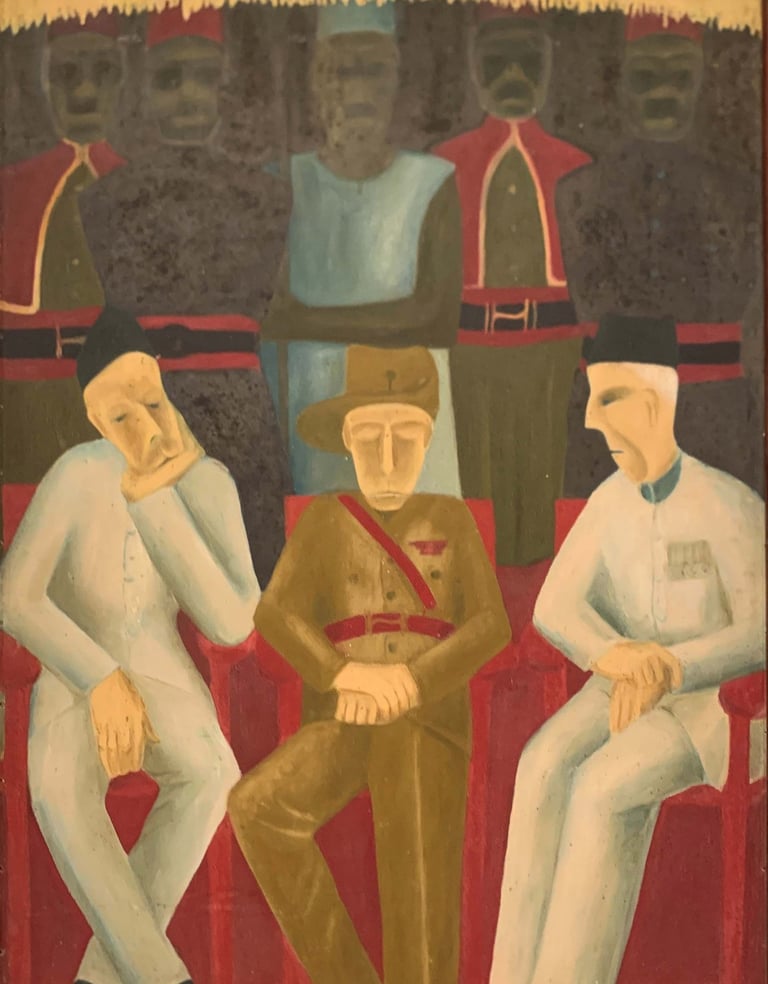


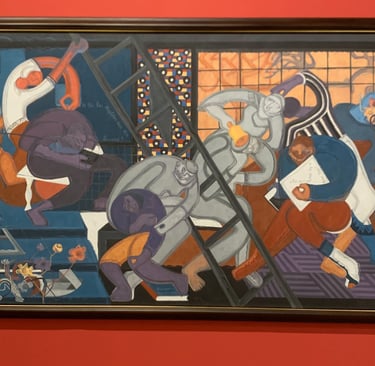
Nigerian Modernism at Tate Modern
An exhibition showing Nigerian artists work before and after its independence from British colonial rule in 1960. A lot of artists; their painting, sculpture, carving, print, poetry, film, music. What stood out to me was the way in which some of the artists on show have fused Nigerian indigenous art forms with European art teachings. It reminded me of the way so many of our cultures are a melding of many influences to create something new and completely unseen before.
They use both schools of art ‘language’ which expresses their ideas in a more articulate way - I think of how being multilingual broadens your vocabulary (not that I would know!)
Seven Wooden Sculptures (1961) by Ben Enwonwu for the entrance of the Daily Mail headquarters. The figures held newspapers that looked like wings - freedom of information?
The caption made me double take - thinking about the client that commissioned and displayed them- ‘arranged in a constellation that evokes a diversity of perspectives'.
Nigeria in 1959 by Demas Nwoko (1960)
A painting depicting the mood the night before Nigerian independence- white officers sit in the foreground looking forlorn as their Nigerian counterparts stand behind them looking sturdy and expectant as they herald the end of colonial British rule. I thought the piece was so expressive and loved the use of colour. Definitely chuckled a little to myself.
A side note on the exhibition design:
Highlife Nigerian music in one room reflecting the uplifting hope of the post independence era. It injected energy and gave you as a visitor a change of pace.
Then a poem stuck directly to a wall- which when you stood in front of - a directional speaker played from above with the poet’s voice reading it aloud. The variation of interpretation was like a reset.
‘Will Knowledge Safeguard Freedom 2’ (1985)
A painting by Uzo Egonu. In his painting, the artist expresses his fear about how power and technological advancement shape the destiny of humankind. His concern is that real advancement cannot be made if we don't grow our knowledge. It resonated, especially now, as we increasingly rely on AI. We outsource thought, stop being critical. In his painting the empty ladder is within reach- but no one uses it, they are busy doing other things (roughly translated as; watching netflix and doom scrolling).
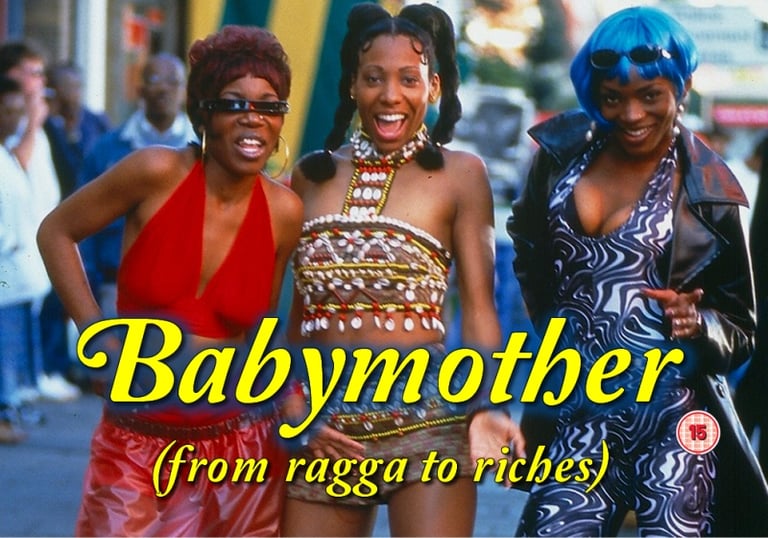

Babymother - ‘the first Black British musical’ - film screened at Brixton House
Everybody has to watch this film! It's about a mother of two with ambitions to become a dancehall star, set in Harlesdon (North Weazy represent). The sass, sexiness, power, saturated colour, music and costumes are something else. The absolute opposite of boring.
In the panel afterwards, the director Julian Henriques spoke about the difference between how we want to be seen by others and the reality of how others see us. He explained that the film’s intention was to reflect the Harlesdon reggae scene - how it wanted to be seen. It was loud, glamorous, colourful.
For me I was transported to the 90s, listening to my parents’ reggae albums on repeat- questionable dance moves in the mirror when no one was looking. In the film - the children watching their mum winding her waist took me to children's day at carnival when I was 4 or 5. The costumes reminded me of weekends spent in Ealing Road, Wembley (that glam south asian wedding gear) the colour, the gems, the sequins, the fuss, the glitz!
And the old London buses.
I can’t help but question my positionality as a brown appearing, half English, half Tamil woman, with this middle class accent and unexplained love for reggae, dancehall. The women in this film were truly themselves, I kept thinking. More thoughts for the journal later.
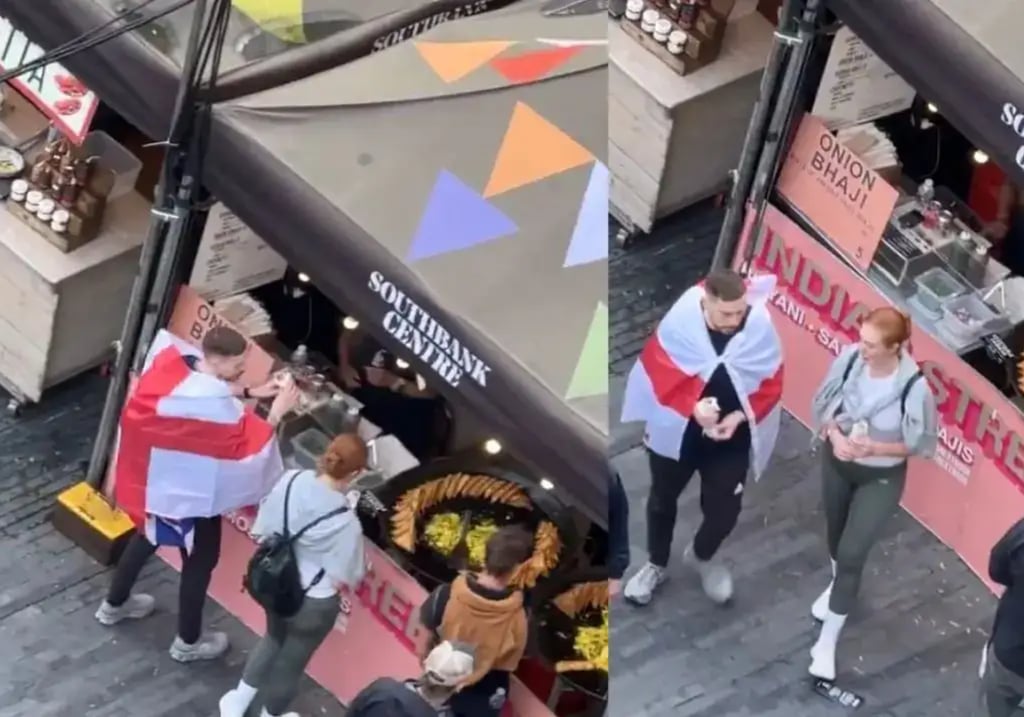

This week has been a beautiful reminder that it is all our London. We can’t avoid the melding and cross pollination of music, film, culture, language. We are it.
Even Tommy Robinson and his lot want to have their onion bhaji and eat it!
Thank you London.
